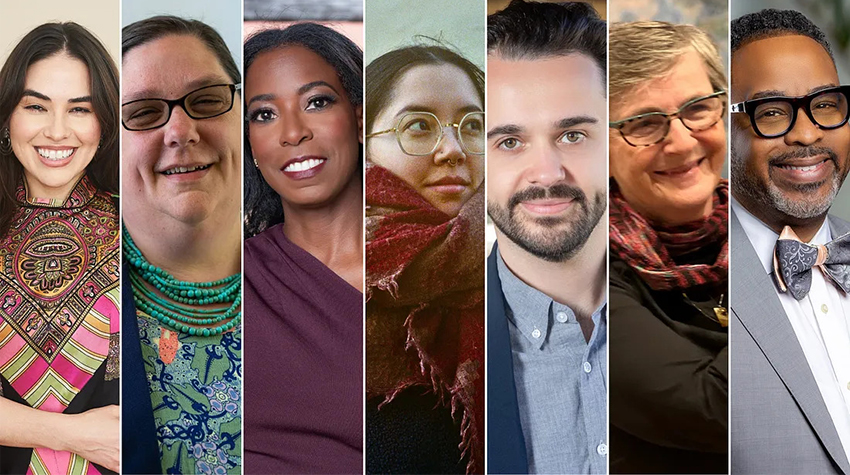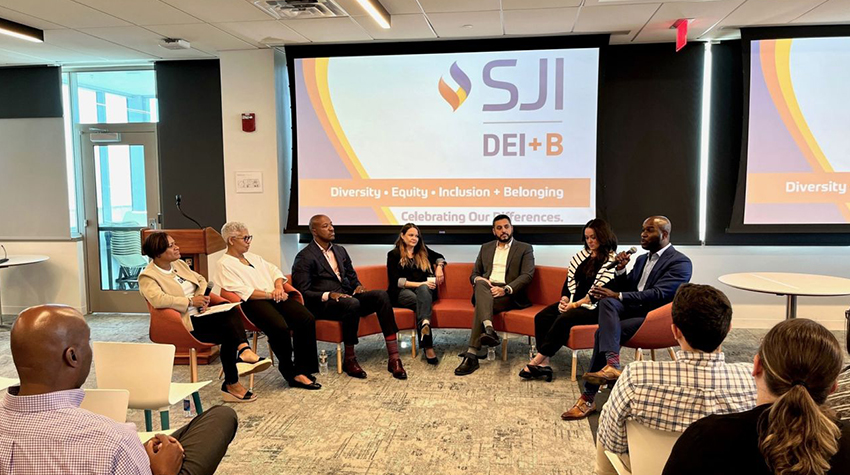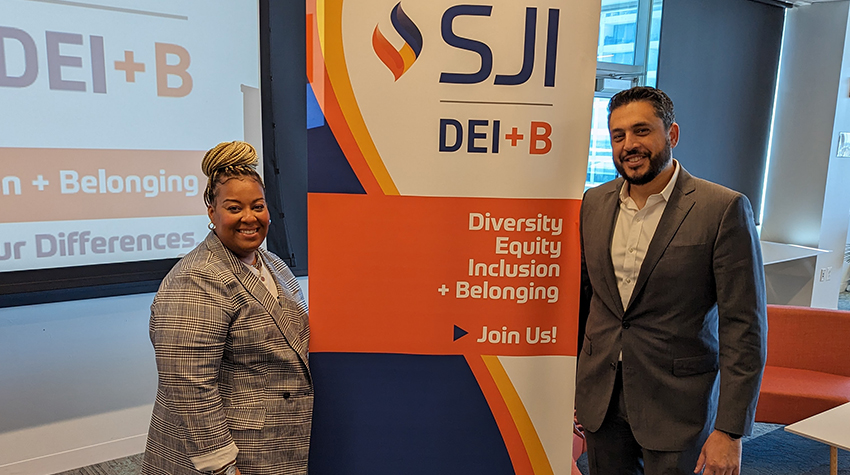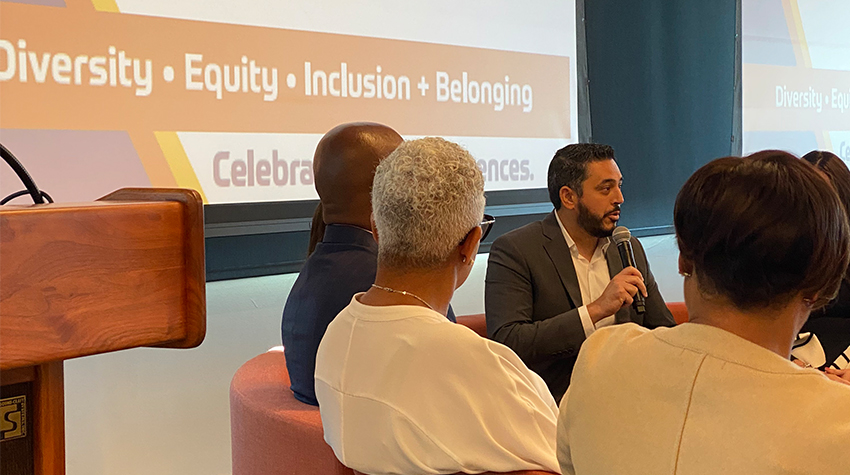New Initiative Aims to Improve Diversity in NJ’s Newsrooms
By Loukaia Taylor ’22
The Racial Equity in New Jersey News Media advisory board is slated to support The Center for Cooperative Media at Montclair State University’s work to promote diversity and racial equity within New Jersey’s local newsrooms.
Made possible through the Robert Wood Johnson Foundation and the Democracy Fund, the initiative’s focus areas include:
- Advocacy for improved quality of life for local journalists and media makers,
- Just and equitable compensation,
- Career advancement opportunities for journalists, especially journalists of color who are underrepresented in newsrooms and in leadership positions.
Erin O’Hanlon, a teaching specialist for the Communication Studies program and project manager for Stories of Atlantic City, is one of several journalists accepted to the new board.
How did you find out that you were appointed to the board? Did you go through an application process or were you nominated?
I applied to the board and was accepted. I am familiar with the board and the initiative through the partnership with Montclair University’s Center for Collaborative Media and Stories of Atlantic City, a hyperlocal digital newsroom run through the Communication Studies program at Stockton with Professor Toby Rosenthal at the helm. I believe that equity in the newsroom is long overdue, and the movement of narrative justice has been built up in response to the need for reparations in journalism.

Students were amazed by the ethnic and community media in the state and the variety of languages that people are reporting in. Most importantly, they saw professional journalists who looked like them and spoke the languages they spoke at home. Something just clicked for them, and that made it amazing for me to witness."
What are your hopes for the board? What kinds of initiatives are you looking forward to creating or supporting?
You know, I am really committed to the work of the board and what it could mean across the state. This includes legacy media organizations, like the Press of Atlantic City, or hyperlocal media organizations, like Stories of Atlantic City. I’m also invested in what it can mean for our Stockton University students – 19% of our students identify as Hispanic, 10% identify as Black, 7% identify as Asian and 4% as multiracial. That is one-third of our students who could be directly impacted by this movement – either as consumers or producers of news. Not all of those students are Communication Studies majors, but some of them are. But 100% of those students engage with information, and it is important to me that they live in informed communities.
Do you see a connection or potential collaboration between your work with Stories of Atlantic City and the advisory board?
I am so proud of the work that we have done – since 2017 – at Stories of Atlantic City. Whether it has been community organizing focused on arts and culture or highlighting public health initiatives in Atlantic City, the community and students have always been at the center. I know that Stories is a model for communities that want to do three things we focus on – equip, inform and engage. That model of narrative journalism is how we approach our storytelling – and that has people at the heart of the work. This is true of the models that are supported by the board as well – people-powered media.
Are there any avenues for students to get involved with the board?
It is still early days in the development of the board, but I am committed to making pathways for students whenever possible. At the core of this initiative is the opportunity to hold space – for diverse ideas and perspectives and to amplify voices that are often shut out of newsrooms and civic information networks in communities. Just recently, Professor Rosenthal and I took students to a conference run by the Center for Cooperative Media that included several members of the board. Students were amazed by the ethnic and community media in the state and the variety of languages that people are reporting in. Most importantly, they saw professional journalists who looked like them and spoke the languages they spoke at home. Something just clicked for them, and that made it amazing for me to witness.

About the Contributor
Loukaia Taylor is a communication specialist in University Relations & Marketing, an alumna of the Communication Studies program and a member of the Campus Committee on Diversity and Inclusive Excellence.
Director of Info Systems Presents at First SJ Industries DEI+B Summit
By Walead Abdrabouh | Fall 2023 Issue of Celebrate Diversity



Walead Abdrabouh, director of Information Systems and Business Intelligence, was a guest speaker at South Jersey Industries’ DEI+B (Diversity, Equity, Inclusion + Belonging) Summit, where issues and actionable suggestions were discussed in support of fostering a diverse, equitable, and inclusive environment. The following is a reflection on that summit.
How will organizations respond to technology trends to ensure a level of equality and inclusion?
On Sept. 20, South Jersey Industries hosted its inaugural DEI+B Summit, which included guest speakers and panel discussions on the subject of diversity, equity, inclusion and belonging. One of the panel sessions, in which I was a participant, revolved around various trends on the horizon, particularly from a human capital, technology, environmental, social and governance (ESG) perspective, and how organizations might respond to these trends as they ensure equality and inclusion in their organization. I took the opportunity to address one of the most talked about technology trends currently facing us - artificial intelligence.
Artificial intelligence (AI), and in particular Generative AI, has become mainstream with tools like Chat GPT, Bard and DALL-E. These tools allow people to provide prompts in the form of questions or directives, and the AI tools will analyze those prompts to produce human-like text and image responses. These tools provide a response based on a vast amount of data, response training and predictive analytics.
Other Related Articles


